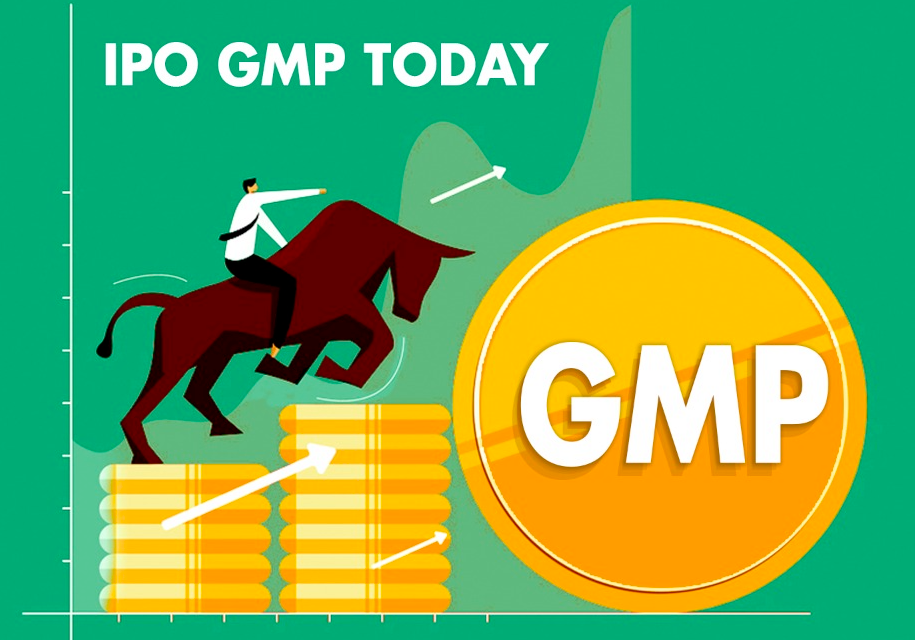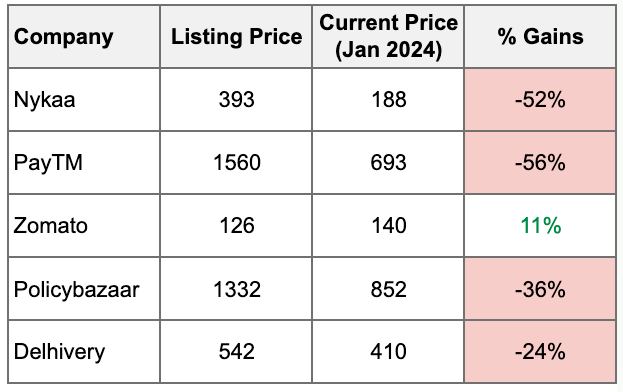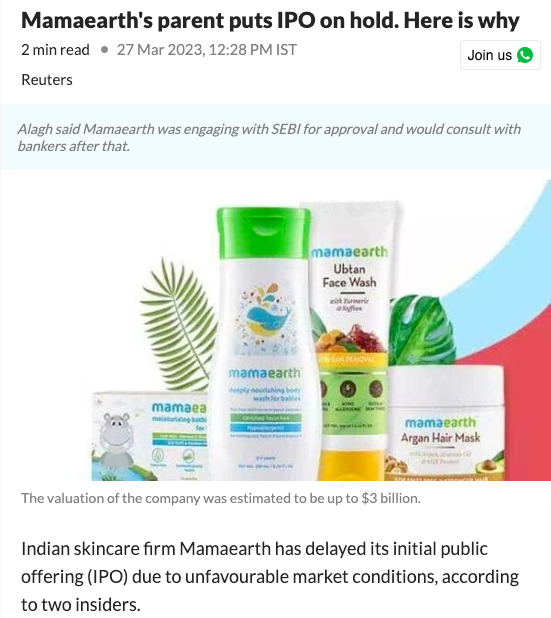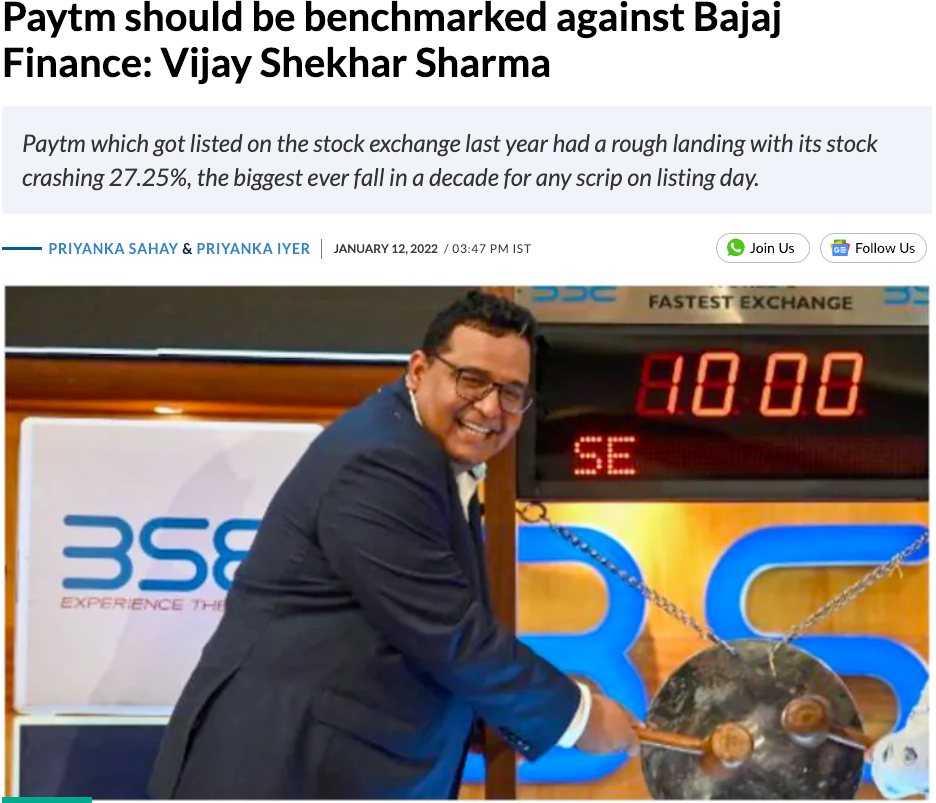What is the Fuss?
IPOs (Initial Public Offering) are events that attract investors. Investors invest for listing gains or for long-term holdings. Social Media gets abuzz with articles and videos of the IPO. People track the grey market premium like a hawk. The company going IPO gives several press appearances and interviews. IPOs nowadays seem similar to a big megastar movie launch event.
But does applying for IPOs make sense for long-term investors? Is it all hype and less to no gains? Or is it a once-in-a-lifetime opportunity to become a shareholder of a multi-bagger company?
I have had a fair share of my experience applying for IPOs. And here is my conclusion: IPOs are not worth applying for. Below are seven reasons why. Let’s get started.
Reason 1: They don’t all make you money
Investors apply for IPOs to (a) Make Listing Gains and (b) Make Long-term Gains.
Listing Gains are made by applying at the IPO price and selling on the listing day. Listing Gain = (Listing Price — IPO application Price). You make listing gains if the listing price exceeds the IPO price. This does not always happen. In 2022, 35% of IPOs listed at a loss (14 out of 40 IPOs) [Refer to article]. In 2021, 30% of IPOs listed at a loss (20 out of 66 IPOs) [Refer to article].

Around 2 in 3 IPOs gave a listing gain. It could be a better odds. Let’s say you can research well, track grey market premiums, study company DRHP, and then only pick IPOs with a high probability of listing gains. Ok, so you did that, and what is the return you get? The average IPO Listing gain in 2022 is 10%. As a retail investor, you will be allotted one lot, amounting to INR 15,000, if you are lucky. This means you will make profit of around INR 1,500 (10% of INR 15,000). All those hours of research, tracking grey market premiums, approving mandates, checking allocation status, etc., to make INR 1,500? Mind you, after tax and brokerage fees, this reduces to INR 1,250.
Long-term Returns: Good companies will give returns in the long run. But if you can enter at a discounted price, your returns will be higher and stress-free.
Let’s look at the stats for 2021 IPO companies. These companies had two years to give good returns, 2022 and 2023. Further, 2023 was a bull run for the Indian stock market, with the Nifty 50 index gaining 22% this year. As it turns out, 30% of the 2021 IPO companies were still at a loss in January 2024. Ouch! That is 20 out of 66 IPOs of 2021.
Let’s look at the retail investors’ darling stocks. These companies’ IPOs were heavily oversubscribed. These are new-age tech stocks. Many of us work here, use their product/services, and rave about it. Maybe this was why these IPOs succeeded at listing but failed to create investor wealth even two years after the IPO.

Do note that all of the above are great, innovative companies. I am tracking some of them as well with intent to invest in near future.
So, IPOs do not necessarily make you money. And if an IPO is overhyped, it will likely not make you money in the short term.
Reason 2: IPOs don’t give you a discount
We all love to buy things at a discount. Many of us patiently wait for the Diwali sale, end-of-season sale, New Year Sale and whatnot. Buying stocks should not be any different. You make money by buying low and selling high. It’s as simple as that. Now, IPOs are events where you do not get a discount.
To understand this, let’s know why companies do IPOs. Companies do IPOs to pay off debt or raise money from the stock market to fuel their business plans. Hence, companies do IPOs to raise maximum money for themselves, not to make money for investors applying for the IPO, at least not in the short-term.
You would have read many companies saying they delayed their IPO because market conditions were unfavourable. This means that the market is flattish or in a downturn, so the company might not get a favourable response if it went for an IPO. Companies know when to do an IPO and at what price to raise capital.

IPO is usually run by experienced investment bankers who know how to price and sell an IPO. These are veterans in their fields. They are hired to maximise IPO success at the ‘right’ price, as seen by the company, its promoters, and early investors.
See it like this: how much would you value your skill, painting, or self-cooked food? The answer is much higher than what a third person would. The same goes for companies. Companies usually value themselves higher and thus place a high IPO listing price. These companies believe in this price and market it by giving logic and sharing future growth plans.
An apt example is Paytm, which was listed at a 27% discount on its IPO price. This disappointed Paytm’s founder, Mr Vijay Shekhar Sharma, who stated that Paytm should be given the same high valuations as another listed peer, Bajaj Finance.

Post a company lists on the stock market, over time, usually more than a year, the stock market values the company and gives it an actual fair value. As the saying goes, the stock market is a voting machine in the short term, and in the long term, it is a weighing machine.
So, if you want to buy a company at a fair or discounted price, an IPO is not that event. Wait for a market downturn or temporary headwinds to emerge to press that buy button.
Reason 3: Less history to evaluate a company
Consistency in performance is one of the critical parameters a long-term investor looks for in a company. Consistency in growing revenues, consistency in margins, consistency in rewarding shareholders via dividends or buybacks, etc.
When a company goes for an IPO, it provides its Profit and Loss statements for just the past three years. Three years is not enough to gauge a company’s performance. Typically, five years or more is ideal to evaluate performance; the more, the better.
What if the company performed well in the last three years due to a large deal win or market tailwinds? But if you can trace back, the company might have been an inconsistent performer earlier than the reported three years.
Evaluating a company’s 5–10-year performance gives more comfort and confidence in the investment decision. Given that I prefer long-term compounding, I usually give companies with little history in the stock market a pass. Maybe a VC-style investment helps in investing in a company with less history. But again, VCs have a different due diligence process and don’t invest in IPOs. They are the ones looking to exit via an IPO.
Reason 4: Post-IPO shock
There are certain events in a person’s journey when they experience a cultural or lifestyle shock. Some notable ones are leaving your parents’ home to join an undergraduate college, shifting cities to enter a new job, getting married, etc. This shock needs time to adjust and to return to your normal performance mode. The same is true for companies doing IPOs.
The post-IPO journey of a company is rocky, and it takes time to adjust. Answering the public shareholders, giving statements in the media, and facing occasional tax raids are new. The company needs to start explaining business decisions they make public or becomes public. The market aggressively questions any acquisition or investment that impacts profitability. Even a disproportionate rise in employee costs needs explaining, and the same goes for if the attrition rate increases.
Making key decisions requires majority shareholders’ votes. Board members need to be diversified. The rules of SEBI need to be abided by. If the CEO bills the company for an expensive team outing, or if the salary of the top management increases, an explanation is due. It’s not easy and requires getting used to it. If the stock market does not like the company’s responses, the stock price is where the reaction reflects and goes down.
I would instead let the new IPO company settle into its post-IPO life. Maybe a year, and then see if it has become stronger and still consistently performs.
Reason 5: Lock-in Expiries cause price drops
The lock-in expiry term might be new, so let’s start by knowing it. Lock-in expiry is a guideline set by SEBI (Securities and Exchange Board of India). These guidelines prevent significant investors in the company, promoters and large shareholders from exiting the company immediately after the IPO.
Why would SEBI do this? To protect retail investors like us. The stock price will collapse if significant shareholders exit the company soon after the IPO. Why collapse? Well, demand and supply. More shares being sold than the demand will cause a significant price drop. Not suitable for retail investors.
But why will significant shareholders sell? Well, to exit. Early investors, such as VC firms, have an investment horizon of 5–7 years, after which they need an exit to invest in other companies and generate returns for their investors. What if these VCs exit immediately after the IPOs?
Promoters may also look to exit partially. They might do so to get some cash, reap the benefits of building a company and taking it to IPO, or for personal reasons. By the way, a promoter selling large shares in his company is not looked at favourably by the market.
Coming back to why lock-in expiry makes IPOs unattractive. Different lock-in expiries are depending on the type of investor. Refer to SEBI’s guidelines here for complete details. For anchor investors, the lock-in expiry is 90 days. For non-promoters, it is six months. For promoters, it is 18 months.
So what happens once the expiry date is reached? Well, massive selling by the relevant shareholder, anchor investor or non-promoter.


So, I stay patient for at least a year after the IPO for the volatility caused by lock-in expiries to settle. For a long-term investor, a one-year wait is okay.
Reason 6: Smart Money stays on the sidelines
Smart money is the money invested by institutional investors. It is called smart money because it is managed by folks who invest and manage money for a living. They have more tools and experience to make sound investment decisions. Many retail investors track smart money to shortlist stocks to invest in.
Now, tracking smart money can show us when institutional investors get into a good stock. And it is not at IPO, not immediately after IPO, but a year after the IPO. That makes sense.
In Nykaa (FSN ECommerce), smart money in the form of domestic mutual funds came in after four quarters (refer to the image below). Look for DII holdings, where DII stands for Domestic Institutional Investors or domestic mutual funds.

It is the same for Zomato, where smart money came in after four quarters (refer to the image below).

In some cases, mutual fund houses take a tracking position in IPOs but usually do not immediately build a significant position. Trust in a company is built slowly over time. Trust is what should drive a long-term investment decision.
Reason 7: Joy of Missing Out (JOMO)
Yes, you guessed it right: JOMO is the opposite of FOMO. Sometimes, you are better off not following the herd. And there is joy in it, hence Joy of Missing Out.
IPOs are heavily planned and orchestrated events. The single aim of an IPO is to sell the company at a ‘reasonable’ price and get it listed on the stock market. The company, its investment bankers, and its IPO team focus on a successful IPO. If you are someone who only books a movie ticket after reading actual movie reviews after its release, you can understand why waiting to invest after an IPO makes sense.
Apart from the fact that IPO makes money for the company promoters and early investors, there is the FOMO, which one has to deal with. Your friends are investing, why aren’t you? The grey market premium just rose, so why not make some quick bucks? Social media throws numerous tricks to create a strategy to get maximum allocations in IPO by applying via multiple Demat accounts, applying on the last day, etc.
Post IPO, you check grey market premium daily, sometimes hourly. More often than not, the premium goes down after the IPO applications’ close date. On the date of share allocation, you start checking in the morning to see if you are among the lucky few who got it. On the day of listing, you are glued to the screen to see if the listing happens at a premium or a discount. FOMO takes a toll on your valuable time, all for making some bucks in the best-case scenario.

Almost all wealthy people from the stock market world are long-term investors. They did not make their wealth from IPOs but by strategically investing in well-run companies and holding them for decades, reaping the benefits from compounding.
So, there is joy in distancing yourself from the IPO frenzy. Let the dust settle, prices stabilise, and then you can pull out your stock-research hat.
Parting Thoughts
It is alright to apply in some IPOs to satisfy your IPO learning itch. Experience the IPO application process. However, you should know that wealth creation is not done by applying for IPOs.
IPOs are a mechanism for companies to list themselves in the public market. If a company is fundamentally strong, it will grow slowly and steadily for decades, giving its investors time to evaluate, invest, and generate healthy returns.
There is no rush. You won’t miss out on getting rich if you miss an IPO. The real wealth creation game starts much after the IPO. Play the game, not get played.
How has been your experience applying for IPOs? Do share in the comments below.
Happy Investing!




